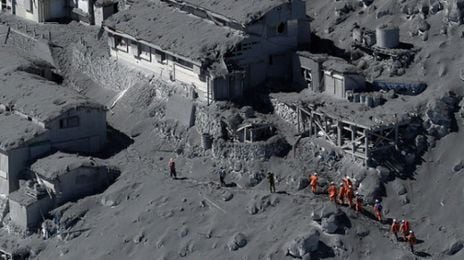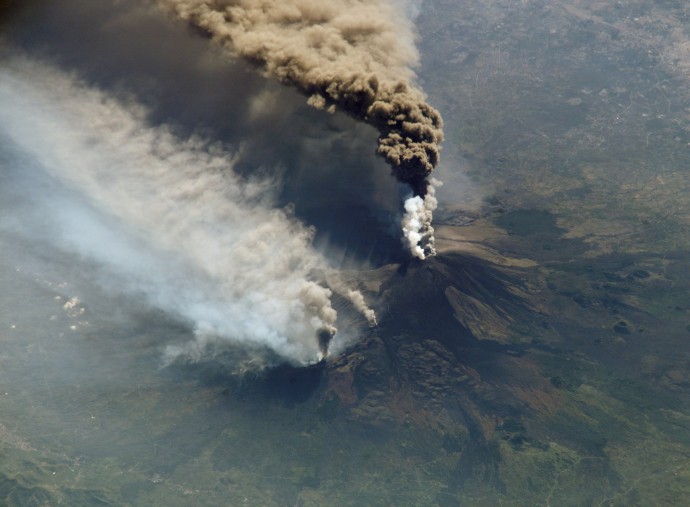No language detected.
Please check the input language, no language detected.
Please check the input language.

Siberian Trap: The most powerful volcanic eruption trace in Earth’s history The Siberian Trap refers to a vast basaltic zone formed about 250 million years ago by large-scale volcanic activity at the end of the Paleozoic Permian period. It is known as one of the most powerful volcanic eruptions in Earth’s history, which covered the entire Siberian region with lava. What is a Siberian trap? Trap: This refers to the basalt zone where stepped columnar joints are developed. The Siberian trap is named because of its highly developed columnar joint structure. Size: The Siberian trap is distributed in a vast area tens of times larger than the Korean Peninsula and is thousands of meters thick. It is evidence that a huge amount of lava erupted. Formation process: Volcanic activity caused by various causes, such as movement of the crustal plate and the hot point of the mantle, caused a huge amount of basaltic lava to erupt to the surface of the earth. Siberian traps and Permian mass extinction Siberian traps are closely related to Permian mass extinction. The Permian mass extinction was the largest extinction in Earth’s history, a tragic event in which 96 percent of marine life and more than 70 percent of land vertebrates were wiped out. Cause: A large amount of volcanic gas (carbon dioxide, hydrogen sulfide, etc.) generated during the Siberian trap formation was released into the atmosphere, causing global warming, causing acid rain, and destroying the ecosystem. Impact: These environmental changes have resulted in mass extinction of marine life and severely damaged land ecosystems. Siberian Trap Meaning The Siberian Trap is not only a trace of the most powerful volcanic explosion in Earth’s history, but it is also important evidence of the impact of changes in the global environment on life. It also provides suggestions on the problems of climate change that we are currently facing. Civilizations destroyed by volcanic eruptions: Historical volcanic eruptions that collapsed before the forces of nature have greatly affected the rise and fall of many civilizations in human history. In particular, large-scale volcanic eruptions caused climate change and natural disasters, leading to the collapse of civilization. The main cause of volcanic eruptions’ destruction of civilization Climate change: Volcanic eruptions eject large amounts of volcanic ash into the stratosphere, blocking sunlight and lowering global temperatures. This causes crop failure, causes famine due to lack of food, and accelerates the decline of civilization. Natural disasters: Volcanic eruptions cause large-scale natural disasters such as tsunamis and landslides, destroying cities and infrastructure, and causing many casualties. Soil pollution: Volcanic ash pollutes soil, reduces agricultural productivity and destroys ecosystems. Disease: After a volcanic eruption, respiratory diseases and waterborne diseases caused by volcanic ash occur, causing population decline. Examples of civilizations destroyed by volcanic eruptions Volcanic eruptions have greatly affected the rise and fall of many civilizations in human history. Humans may be powerless before the power of nature, but through research and preparation for volcanic eruptions, we will be able to create a safer and more sustainable society in the future. Minoan civilization: The eruption of the Santorini volcano in the Mediterranean Sea is cited as the main cause of the demise of the Minoan civilization. Tsunamis and volcanic ash from volcanic eruptions hit Knossus, the center of the Minoan civilization, which declined and was subsequently conquered by another civilization. Acadia Civilization: The Acadia civilization in the Mesopotamian region was decimated by frequent volcanic eruptions and climate change, and absorbed by other civilizations. The volcanic eruption of Mt. Baekdu and the rise and fall of civilization: The eruption of deep-seated volcanoes played an important role in influencing the development and change of civilization, not just a factor that destroyed civilization. After experiencing volcanic eruptions, the civilization developed into a stronger one through efforts to take measures against natural disasters and adapt to changes in the environment. The eruption of Mt. Baekdu is a huge event that has greatly influenced the flow of history and civilization beyond simple natural disasters. In particular, the eruption, which was recorded as one of the most powerful volcanic eruptions in history, left a deep scar on the environment, society and civilization of Northeast Asia. History and scale of Mt. Baekdu volcanic eruptions: Mt. Baekdu has erupted many times over the past 10,000 years, especially around 946, which is recorded as one of the most powerful volcanic eruptions in history. The explosion erupted into huge amounts of volcanic ash, covering the entire East Asian region, causing climate change and devastating civilization at the time. Explosion scale: The 946 Mt. Baekdu explosion was estimated to be above the Volcanic Explosion Index (VEI), one of the largest explosions in history. Volcanic ash ejected from the explosion flew to northern Honshu, Japan, and the Korean Peninsula and Manchuria were covered with thick volcanic ash. The impact of the explosion on civilization Agriculture and food production: Volcanic ash can also fertilize the soil, but thick volcanic ash destroys crops, causes climate change, and severely hindered food production. It is estimated that this reduced agricultural productivity, which was the basis of society at that time, and caused famine and disease. Cultural and social change: Volcanic explosions are likely to have destroyed the social order of the time and brought about the emergence of new cultures and social systems. As the existing lifestyle collapsed, new skills and knowledge were needed, and the values and behavior of social members would have changed. Rise and fall of the nation and power: The explosion of Mt. Baekdu greatly affected various countries and forces in the ancient Northeast Asia region. In particular, powerful countries such as Balhae were directly hit by the explosion and destroyed, and other countries were severely damaged and their power weakened. Persistent study in contrast to the possibility of a future explosion of Mt. Baekdu: Mt. Baekdu is still an active volcano and could explode again at any time. Therefore, it is important to continuously observe and study the activities of Mt. Baekdu volcano. International cooperation: Since the volcanic eruption of Mt. Baekdu could affect the entire East Asia beyond the Korean Peninsula, it is necessary to establish a joint response system through international cooperation. Measures to minimize damage: Various measures are needed, such as establishing an accurate prediction system, formulating evacuation plans, and expanding disaster prevention facilities, in order to minimize possible damage caused by volcanic eruptions. Mt. Baekdu Volcanic eruption Siberian trap, the most powerful volcanic eruption in Earth’s history, refers to a vast basalt zone formed about 250 million years ago by large-scale volcanic activity at the end of the Paleozoic Permian. It is known as one of the most powerful volcanic eruptions in Earth’s history, which covered the entire Siberian region with lava. What is a Siberian trap? Trap: This refers to the basalt zone where stepped columnar joints are developed. The Siberian trap is named because of its highly developed columnar joint structure. Size: The Siberian trap is distributed in a vast area tens of times larger than the Korean Peninsula and is thousands of meters thick. It is evidence that a huge amount of lava erupted. Formation process: Volcanic activity caused by various causes, such as movement of the crustal plate and the hot point of the mantle, caused a huge amount of basaltic lava to erupt to the surface of the earth. Siberian traps and Permian mass extinction Siberian traps are closely related to Permian mass extinction. Permian mass extinction is the largest extinction event in Earth’s history, with 96% of marine life and more than 70% of terrestrial vertebrates extinct









